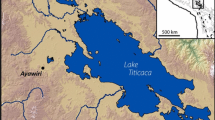Abstract
Small legume seeds are commonly recovered from Epipalaeolithic and Early Neolithic sites in north Africa and south-west Asia, often as a high proportion of the total plant remains. Their role is uncertain, but it is thought that small-seeded legumes may once have been a human food resource. They are difficult to identify. The gross morphology and testa surface micromorphology have been investigated in fresh seeds of members of the tribe Trifolieae and some related tribes in the same subfamily Faboideae. The separation of the four genera Medicago, Melilotus, Trifolium, and Trigonella has been attempted by multivariate analysis of seed characters that can be seen in experimentally charred seed specimens. The characters used have also been observed in well-preserved ancient charred small legume seeds, and so can be readily used for the purpose of identification. Although identification to the level of species is rarely possible, identification to generic level could provide information useful for the interpretation of this category of ancient plant remains.
Similar content being viewed by others
References
Bolton JL (1962) Alfalfa. Hill, London
Butler EA (1988) The SEM and seed identification, with particular reference to the Vicieae. In: Olsen L (ed) scanning electron microscopy in archaeology. BAR International Series 452, Oxford, pp 215–224
Butler EA (1990) Legumes in antiquity: a micromorphological investigation of seeds of the Vicieae. Ph.D. thesis (unpublished), University of London
Butler EA (1991) The Vicieae: problems of identification. In: Renfrew JM (ed) New light on early farming. Edinburgh University Press, Edinburgh, pp 61–73
Butler EA (1995) The role of small legumes as a resource in prehistory, with particular reference to temperate Africa. Acta Palaeobot 35: 105–115
Doran JE, Hodson FR (1975) Mathematics and computers in archaeology, Edinburgh University Press, Edinburgh
Duke JA (1981) Handbook of legumes of world economic importance. Plenum Press, New York
Duncan RJ, Hodson FR, Orton CR, Tyers PA, Vekaria A (1988) Data analysis for archaeologists: the Institute of Archaeology programs. Institute of Archaeology, London
Gupta M (1991) Seed coat structure in some species of Trigonella. Scanning Microsc 5: 787–796
Harborne JB (1988) Introduction to ecological biochemistry, 3rd edn. Academic Press, San Diego
Harborne JB, Boulter D, Turner BL (1971) Chemotaxonomy of the Leguminosae. Academic Press, New York
Helbaek H (1969) Appendix I. Plant collecting, dry-farming and irrigation agriculture in prehistoric Deh Luran. In: Hole F, Flannery KV, Neely JA. (eds) Prehistory and human ecology of the Deh Luran plain. Museum of Anthropology, University of Michigan, Michigan, pp 383–426
Hillman GC, Colledge SM, Harris DR (1989) Plant-food economy during the epipalaeolithic period at Tell Abu Hureyra, Syria: dietary diversity, seasonality and modes of exploitation. In: Harris DR, Hillman GC (eds) Foraging and farming. The evolution of plant exploitation. Unwin Hyman, London, pp 240–268
Jha SS, Pandey AK (1989) Seed coat structure in Melilotus (Fabaceae). Phytomorphology 39: 221–229
Lersten N R (1981) Testa topography in Leguminosae. Proc Iowa Acad Sci 88: 180–191
Lersten NR, Gunn CR (1982) Testa characters in the tribe Vicieae, with notes about tribes Abreae, Cicerae and Trifolieae (Fabaceae). U S Dep Agric Tech Bull 1667: 1–40
Lesin KA, Lesins I (1979) Genus Medicago (Leguminoseae). Junk, The Hague
Lock JM (1989) Legumes of Africa. Royal Botanic Gardens, Kew
Lock JM, Simpson K (1991) Legumes of West Asia. Royal Botanic Gardens, Kew
Small E (1987) Generic changes in Trifolieae subtribe Trigelloninae In: Stirton CH (ed) Advances in legume systematics, part 3. Royal Botanic Gardens, Kew, pp 169–181
Small E, Jomphe M (1989) A synopsis of the genus Medicago (Leguminosae). Can J Bot 64: 3260–3292
Small E, Brookes B, Lassen P (1990) Circumspection of the genus Medicago (Leguminosae) by seed characters. Can J Bot 68: 613–629
Smith DL (1981) Cotyledons of the Leguminosae. In: Polhill RM, Raven PH (eds) Advances in legume systematics, part 2. MAFF and Royal Botanic Gardens, Kew, pp 927–940
van Staden J, Manning JC, Dickens CWS (1987) A phylogenetic analysis of the role of plant hormones in the development and germination of legume seeds. In: Stirton CH (ed) Advances in legume systematics, part 3. Royal Botanic Gardens, Kew, pp 387–442
Stevenson GA (1969) An agronomic and taxonomic review of the genus Melilotus Mill. Can J Plant Sci 49: 1–20
Wolf WJ, Baker FL, Bernard RL (1981) Soybean seed-coat structural features: pits, deposits and cracks. Scanning Electron Microsc 3: 531–544
van Zeist W, Bakker-Heeres JAH (1982) Archaeobotanical studies in the Levant, 1. Archaeobotanical studies in the Damascus Basin: Aswad, Ghoraife, Ramad. Palaeohistoria 24: 165–256
van Zeist W, Bakker-Heeres JAH (1984) Archaeobotanical studies in the Levant, 3. Late-palaeolithic Mureybit. Palaeohistoria 26: 171–200
Zohary M, Heller D (1984) The genus Trifolium. Israel Academy of Sciences and Humanities, Jerusalem
Author information
Authors and Affiliations
Rights and permissions
About this article
Cite this article
Butler, A. Trifolieae and related seeds from archaeological contexts: problems in identification. Veget Hist Archaebot 5, 157–167 (1996). https://doi.org/10.1007/BF00189447
Received:
Accepted:
Issue Date:
DOI: https://doi.org/10.1007/BF00189447




